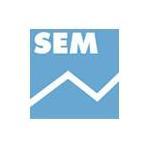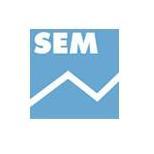 Author: Donald Jowdy, Suncoast Equity
Author: Donald Jowdy, Suncoast Equity
Covestor model: Suncoast Equity
The equity market dialed back on the gains earned in the first quarter. SEM client portfolios now stand at +10.9%, compared against +9.5% for the S&P 500 through the first half of 2012.
Europe’s current economic woes, the slow pace of growth in the U.S. and the less robust growth in Asia are all contributing to the volatility of stock prices. Predicting what will happen in Greece next week or what the growth rate in China will be for the second half of 2012 is not important to the investment process in achieving your long-term investment goals.
We watch the operating margin line for both our companies and potential investment candidates as an important indicator of a worthy investment and we share our insight below. The subdued and volatile conditions we are experiencing today are well broadcast and adequately reflected in the current stock valuations, thereby yielding an opportunistic environment in select high-quality investments.
Europe’s fiscal situation is certainly leading the headlines again this quarter and we will not make a prediction as to the next announcement or outcome. The second half of that previous sentence may have scared you but it shouldn’t. While we observe global economic conditions, predicting the next development is not that useful when it comes to the subject of successful investing and our goals to preserve and grow your capital.
So why can we ignore the multitude of macroeconomic predictions or events such as the recent events in Europe or whether Spain may falter next quarter? The most direct answer is that the world’s citizens will continue to consume, at increasing amounts, products and services for decades and centuries to come in spite of near term events that may seem to derail this progress.
And businesses, such as those in our portfolio, will always be there to produce and deliver the needed goods. Short-term events in Spain or Italy tell us virtually nothing about the long term demand for goods and services from Apple (AAPL) to Varian Medical (VAR).
With the knowledge that we will forever consume, let’s shift and answer why do we invest? We invest with the basic idea that we are forgoing spending today for the opportunity to consume more later (or to transfer this wealth we built in part or whole to others in need). So how do we invest?
Investment opportunities vary including real estate, private businesses and other opportunities including fixed income and non productive assets, such as metals. Our service to you involves investing in publicly-traded businesses that will produce growing amounts of earnings, adjusting for inflation, and consequently prove to be more valuable in the future.
With our marching orders intact, our mandate is to serve you by researching and identifying businesses that have the ability to deliver output in excess of the investment required to produce those goods and services, and do so with a minimum of new capital investment required going forward.
The small collection of companies we have in our portfolio has a proven ability in this regard as they all earn above average returns on capital while incurring little to no financial leverage. This combination is ideal for generating solid relative investment returns and is reflected in the total and annualized return we have earned for our clients since our inception.
Aside from a strong balance sheet and high return on capital characteristics that we require, we favor those companies whose operating margins are increasing while the business is growing its product or service revenue.
Improving operating margins can come from various positive sources including the (1) ability to raise prices with stable product or service costs, (2) simple advantages of scale, (3) product innovation or product line expansion complemented by increasing demand from your customers (4) first mover advantage in a new market or marketplace. We share a few examples from our portfolio: Apple, Visa (V), Grainger (GWW) and McKesson (MCK).
For these four companies, which represents 25% of our portfolio, the powerful increase in operating margins, combined with sales growth, drives net profit growth for us as owners and consequently a higher stock valuation over time. You will immediately be struck by the difference in operating margins among these different businesses; so it is important to focus on the improvement rate.
We would also emphasize that a slow and steady increase in operating margins over a longer period is just as positive, likely more so, than a sharp rise in a short period of time since it signals an enduring ability to keep it there for a sustainable time period. Grainger’s operating margin improvement of 40% over 8 years is as investment noteworthy as Apple’s 58% improvement over a much shorter time period.
In a competitive world, steady operating margins are also an accomplishment. So we are delighted to own several businesses in our portfolio that are skilled at managing their industry leading margins. Of course, operating margins don’t grow to the sky and we are always on the look-out for signals of competitive threats that may reverse the direction and signal a business is losing some of the advantages.
During the quarter we added Express Scripts (ESRX) to our portfolio and quickly brought it to a core portfolio weighting. ESRX is one of the largest pharmacy benefit managers in the U.S, especially following its recent acquisition of Medco. The company handles the drug benefit program for many employer health plans as they process and pay prescription drug claims.
Consistent with our discussion above about the benefits of improving operating margins, we believe that ESRX’s leadership in the consolidation of its industry will drive greater scale and higher margins for the company over at least the next few years. Similar to our investment in McKesson, ESRX also benefits from the widespread effort to contain health-care cost increases and the patent expirations trend for many brand name drugs.
Margin of Safety (MOS) is an important investment idea coined by the great investor Ben Graham. The MOS concept is practiced by a relative minority despite the popularity of the phrase and its endorsement by his greatest student, Warren Buffett. The main concept is to protect against a permanent loss of capital.
Each of us from Ben Graham’s intellectual village practices it in a slightly different method, but for us it boils down to a two-part analysis. First is the element of price to value, or what you pay for that ownership share in a business. Second the probability assessment that a business could suffer a significant economic blow.
We sold the two companies in our portfolio, General Dynamics (GD) and Harris (HRS), that count on the U.S. Government as a meaningful customer. In the case of GD and HRS, it is the second part of the MOS analysis, or the unknown outcome of defense spending cuts, that concerns us.
We also see the early stages of shifts to a different type of warfare including cyber attacks and alternate equipment protection/offense (unmanned drones). It is likely that GD and HRS will navigate through this challenging period because of a few of the reasons we were first attracted to both companies including installed base, solid financials etc.
However, the murky outlook for a large part of their business weighs heavily and the SEM-Disciplined investment system (SEM-DIS) and our Margin of Safety principle in practice required us to disengage at this time.
It seems as though the year has yielded few real surprises and the issues, including fiscal debt in various mature sovereign nations, remain front and center. The corresponding news feeds that frequently jar the crowd and cause daily market gyrations create opportunity. Volatility is the friend of the long-term investor and it enables us to become owners at attractive prices.
Meanwhile, our businesses are growing in what may be a dampened but still global growth environment. The SEM-DIS which focuses on businesses with great balance sheets, strong operating cash flow, and importantly growth characteristics, can successfully guide us through this current and future environment serving to grow and preserve our capital. We welcome your call at any time and we offer continued thanks for your support.




